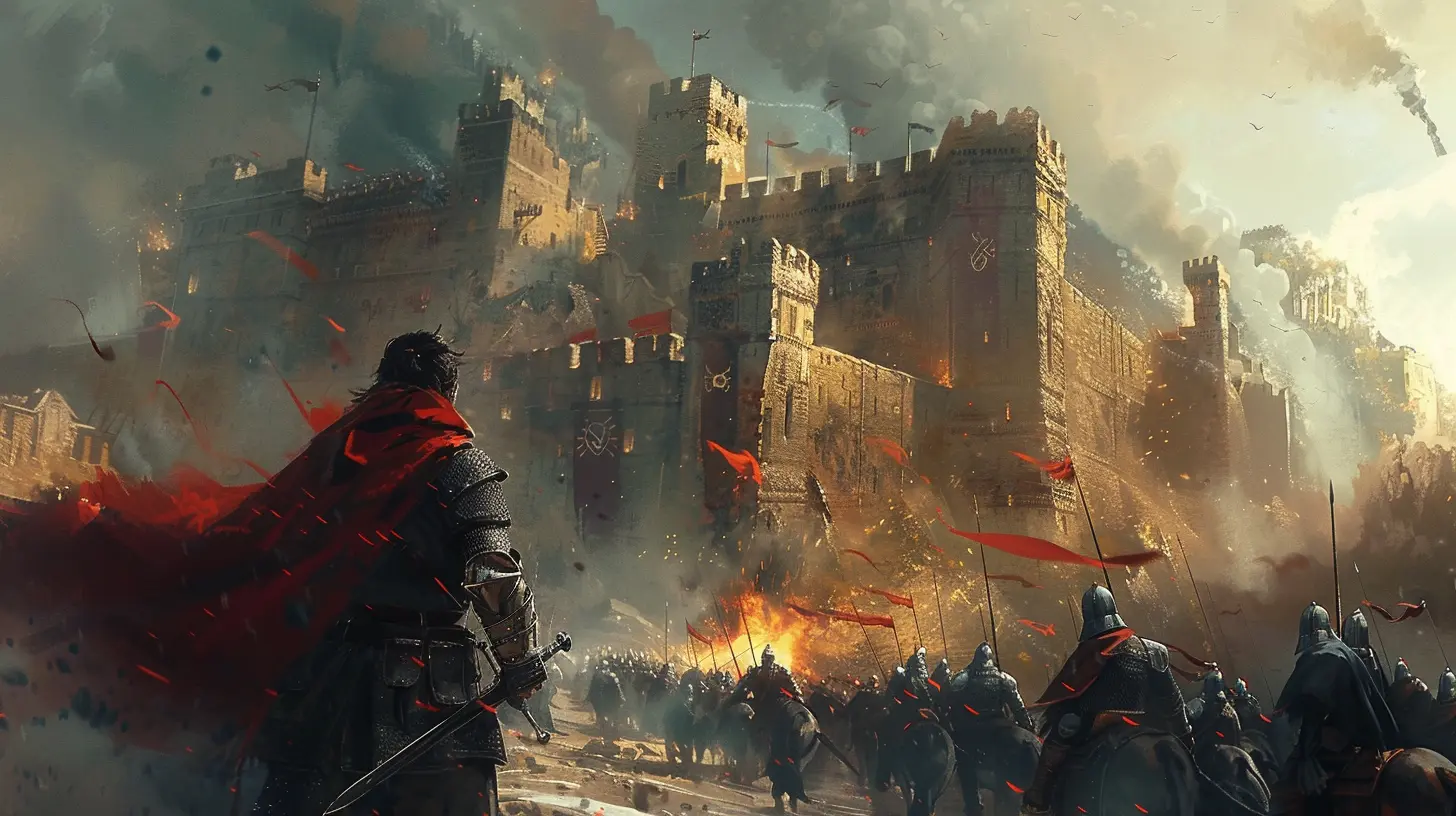Why Enemy AI Design Is Crucial in AAA Game Mechanics
21 November 2025
If you’ve ever raged at a game because of “stupid” enemies or praised one that made you sweat bullets because of smart, unpredictable foes, then congrats—you’ve already bumped into one of the most important parts of game design: enemy AI. In the world of AAA gaming, where budgets are sky-high and expectations even higher, enemy AI isn’t just a background system—it’s the heartbeat of immersion, challenge, and replayability.
But what exactly makes enemy AI so important in AAA game mechanics? And why does it often make or break the entire experience?
Let’s break it down piece by piece.
What Is Enemy AI Anyway?
Alright, let’s keep it simple. Enemy AI (Artificial Intelligence) refers to how the non-playable enemies in a game behave. It’s the system that controls whether an enemy hides behind cover, flanks you, rushes in like a berserker, or just... stands there like a confused duck.In AAA titles, enemy AI isn’t just scripted to follow a pattern. Instead, it's designed to react dynamically to your decisions, adapt to the environment, and even work together in teams. It’s like giving your enemies a brain, albeit a digital one.
It's Not Just About Smarts—It's About Believability
Here’s the deal—players don’t just want enemies that are smart. They want enemies that feel believable.Think about it. If you're playing a stealth game and knock out a guard, but no one ever notices the missing guy? Feels fake, right? Or if you're in a firefight, and enemies run blindly into bullets? That’s not a challenge. That’s just target practice.
Great enemy AI:
- Reacts to sound and sight.
- Communicates with other enemies.
- Adapts to your playstyle.
- Feels like it belongs in the game world.
It’s not just about being hard to beat—it’s about immersing you in the moment.
How Poor Enemy AI Breaks Immersion
Let’s be real—nothing pulls you out of an intense moment faster than dumb enemy behavior.Imagine hiding in a bush, and a guard stares right at you but walks away. You’re not feeling tense; you’re rolling your eyes. Or you're in the middle of what’s supposed to be a tough boss fight, but the enemy just stands still after your first hit. Talk about anti-climactic.
Bad enemy AI:
- Breaks immersion.
- Kills challenge.
- Frustrates players (and not in a good way).
In a AAA game, where every frame and mechanic is polished to shine, bad AI sticks out like a rusty nail on a golden throne.
Making Combat More Engaging
Enemy AI is the secret sauce in making combat feel dynamic and rewarding.Think of games like "The Last of Us Part II" where enemies work in squads, flank you, and call out your position. It’s not just about shooting—it’s about outsmarting. It turns each encounter into a mini puzzle.
And hey, when enemies force you to change tactics, that’s when gameplay gets interesting. Maybe you can’t brute-force your way through—you’ve gotta sneak, distract, or use your environment creatively. That’s enemy AI doing its job.
Dynamic Encounters vs. Scripted Fights
Ever feel like a combat sequence plays out the same every time you reload a checkpoint? That’s likely due to static scripting.Now compare that to enemies who behave differently every time. One time they might rush you. Another time they might hold back and throw grenades. This unpredictability feeds into what gamers crave—variety, challenge, and a sense that the enemy is just as much “alive” as they are.
AI That Learns? It’s Already Happening
Okay, this part's kinda cool—and futuristic.Some AAA games use adaptive AI that actually learns from how you play. If you always use stealth, enemies might start checking shadows more. Keep using the same weapon or strategy? They’ll develop counters.
This doesn’t mean enemies are actually learning like humans. But designers are programming behavior trees and rule systems that simulate learning. It’s like giving the AI a memory, and in doing so, it puts your skills to the test.
Games like “Middle-Earth: Shadow of Mordor” used the Nemesis System, where enemies remembered past encounters. Not only did it make the world feel alive, it allowed for insane emergent storytelling. Like that one orc who keeps coming back to ruin your day.
Enemy AI and Game Difficulty—A Delicate Balance
“Just make the enemies smarter” sounds great. But here’s the thing: too smart, and the game becomes frustrating. Too dumb, and it's boring.AAA developers walk a tightrope. They need to make enemies challenging but fair. Predictable enough that you can learn their patterns, but adaptive enough to keep you on your toes.
Ever notice how in a good game you gradually start understanding enemy behaviors? That’s design, baby. Players feel rewarded for learning, not punished by randomness.
Cooperative Enemy Behavior = Next-Level Immersion
Individual enemies can only do so much. But when they start working together? That’s when things get spicy.Good enemy AI design includes coordination—enemies flanking while others provide suppressive fire, or groups flushing you out of cover. This kind of teamwork forces you to think tactically.
In games like “Halo,” enemies like the Covenant aren’t just cannon fodder. Elites give orders, Grunts panic when leaders die, and Jackals use cover intelligently. It turns a simple shootout into a tactical dance.
Stealth Games and AI: A Special Relationship
Let’s give a special shout-out to stealth games. They live and die by enemy AI.Games like “Metal Gear Solid” or “Dishonored” rely heavily on AI perception systems:
- Can the enemy hear your footsteps?
- Do they investigate suspicious events?
- Do they alert others?
If these systems aren’t tuned right, stealth becomes either too easy or a broken mess. But when they work? You get moments of pure tension and triumph—sneaking past guards by a hair’s breadth, distracting them with thrown objects, or causing chaos from the shadows.
AI Isn’t Just Code—It’s Part Of The Narrative
This is one of the coolest aspects that often gets overlooked.Enemy AI doesn’t just serve mechanics—it tells a story.
Let’s say enemies cry out in pain when shot, or call for backup. Maybe they taunt you or react to your specific actions. That tiny bit of behavior gives them personality. Suddenly, they’re not just meat shields—they’re characters.
“The Last of Us Part II” even gave enemies names. When one died, others might mourn or get angry. It’s such a small detail, yet it adds emotional weight to every bullet fired.
AI and Replayability: Keeping Players Coming Back
Let’s face it—we don’t replay games with boring AI. Why would we? Once we learn their patterns, what's left?But great enemy AI keeps us guessing. It adapts. It surprises us. With different enemy reactions and behaviors each time, you can play the same level multiple ways and get different experiences.
That’s not just good design—it’s free content. It extends the life of the game without adding anything new. Win-win.
How AI Integrates With Other Mechanics
Enemy AI rarely works in isolation. It’s tightly woven into other core mechanics—combat systems, level design, player abilities, sound design, and more.For instance:
- In RPGs, AI might determine how enemies prioritize targets.
- In shooters, it affects how enemies take cover or use grenades.
- In horror games, it can control pacing to build tension.
If one thread is off, the whole experience can unravel.
AAA games have entire teams dedicated to enemy AI for this very reason. It’s not just technical—it’s creative.
The Future of Enemy AI in AAA Games
We’re at an exciting point in game development. As machine learning and neural networks evolve, the idea of AI that truly learns on the fly might not be science fiction anymore.Imagine enemies that remember your past games. Or ones that create entirely new strategies during a mission. We’re already seeing glimpses of this in experimental games and modding communities.
AAA studios are now pushing the boundaries with:
- Procedurally generated behavior patterns.
- Emotive AI (enemies that “feel” fear or courage).
- Realistic group dynamics and battlefield communication.
The future? It's looking pretty wild—in the best way.
Final Thoughts: Why It All Matters
So, why is enemy AI design so crucial in AAA game mechanics?Simple. Because it breathes life into the world. It challenges you, immerses you, frustrates you, and rewards you. It’s what makes a gunfight feel like a chess match instead of whack-a-mole. It’s what makes each enemy encounter feel new rather than just another number on a kill count.
When enemy AI is done right, it becomes the unsung hero of gameplay. You may not always notice it—but you’d definitely miss it if it weren’t there.
So next time you’re fighting that elite squad, sneaking past guards, or outmaneuvering a boss with terrifying precision—take a moment to appreciate the digital brain behind those enemies. They’re working hard to make your game unforgettable.
all images in this post were generated using AI tools
Category:
Aaa GamesAuthor:

Avril McDowney

